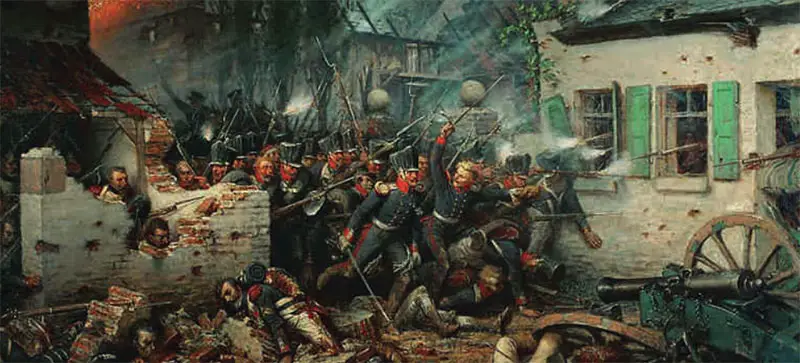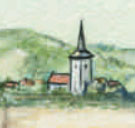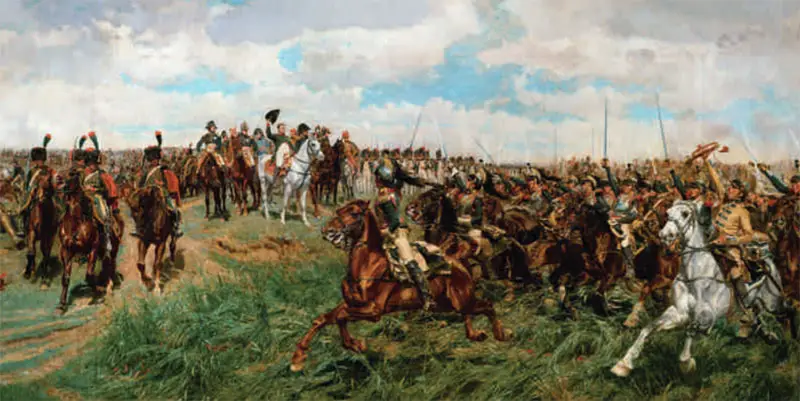
For the die-hard war gamers and for those players that, after having played the standard game a few times, are still in search of yet another challenge, there is the Expert version. As much as this is possible for a board game that is intended to be fun, an attempt has been made to follow the historical reality of the battle.
In this version, the following rules apply:
If Napoleon falls in battle, the game immediately ends. In this case the Allies will have achieved a decisive victory! If Wellington falls in battle, the game continues, but the Allied player will have two actions less.
The Lines of Retreat cards are not used.
Wellington's lines of retreat are located on the Allied centre. If the French manage to occupy it with at least two units, the game will immediately end. In that case, the French will have won a decisive victory.
If the French player manages to put two units on the Allied left flank or Allied right flank, this will lead to an Allied retreat. In that case, a Pursuit will determine whether the battle was indecisive, a minor victory or a major victory for the French player (see The Pursuit).
The occupation of the French left flank, center or right flank will lead to a French retreat. In that case also, a Pursuit will determine if the battle was indecisive, a minor victory or a major victory for the Allied player (see The Pursuit).
The Terrain tile Hougemont in the middle of the board on the Allied right flank is occupied by two Allied Infantry pieces at the start of the game!
The French player has the village of Plancenoit on his right flank.
Plancenoit

Plancenoit was a small village on the eastern flank of the French army. It served as a last strongpoint in order to protect their right flank, and it was the location where the fiercest fighting took place between the Prussians and the French on that fateful day in June.
Plancenoit will provide all and any Infantry piece on the tile with +1 strength.
Plancenoit does not need to be completely occupied before Infantry pieces benefit from the +1 strength.
Cavalry, Commanders, Commanders in Chief and Artillery can cross the Plancenoit tile unhindered, but they do not gain any benefits.
Unlike a building tile, with Plancenoit, the players have the choice to direct their Artillery fire on the units OR the village.
The Pursuit
Experts in Napoleonic Warfare are aware that the presence of cavalry was a crucial factor in obtaining a victory on the field of battle. After a battle, its role was no less vital - it was the cavalry that decided if the enemy would still play an active role in the campaign or not. If an enemy army was defeated the victorious cavalry had to go in pursuit of the enemy units fleeing the field.
As mentioned earlier, in the Expert version the occupation of any lines in the rear will lead to a defeat. At this moment, the game proper ends and the victorious player can send his remaining cavalry in pursuit.
The objective of the defeated player is to get as many of his remaining Infantry and Artillery units off the board as fast as possible with the remaining actions at his disposal.
The victorious player can now use his actions to send out his remaining cavalry to capture as many of the opponent's units as he possibly can in order to infl ict on him as much damage as he can.
The victorious player may start the pursuit and with his cavalry piece choose a piece of his opponent to attack. If the player can still play out three actions, he may attack three times with the same cavalry piece or with another cavalry piece. Infantry or artillery pieces are not used in a pursuit.
Afterwards it is the defeated player's turn. He may use his cavalry to attack the opponent's cavalry OR he may use his actions to simply take one of his pieces off the board.
When there is a draw, the cavalry of the victorious player will always win from the cavalry of the defeated player.
Heavy cavalry will still lose 1 strength after every attack, but now cannot be pulled back in order to regain strength. Instead of losing more units to the opponent, the player would be wise to take the cavalry off the board for good instead of continuing his pursuit.
If the victorious player does not have any more cavalry pieces to pursue or does not want to pursue anymore, the casualties on both sides are counted.
Napoleon and Wellington don't play any active role during a pursuit. They are immediately put out of harm's way!
If there is NO difference or a difference of a maximum of 3 pieces between both armies, the battle will have been Indecisive-the defeated player has been successful in pulling his army back in fairly good order and will still be able to fight another day-maybe even tomorrow.
If there is a difference between 4 and a maximum of 9 pieces between both armies, the victorious player has achieved a Minor victory-the defeated player has suffered a large number of casualties. It has received a serious beating and will retreat. Although not destroyed, it will need time to recover before attacking again.
If there is a difference of 10 pieces or more between both armies, the victorious player has gained a Major victory-the defeated player's army has been completely crushed and routed. It will not play any signifi cant role in the campaign anymore.

Extra Scenarios
For those whose thirst for battle has not been quenched, there are still the following scenarios that can be played in the Expert version:
Start the battle early
The French army at Waterloo was late in assembling. This is the reason why historically the battle was postponed until around 11:30 a.m. (not because of the muddy soil as many writers have claimed!). The 6th Army Corps under Lobau had barely arrived when the battle proper begun. Even the Old and Middle Guard had not arrived by then.
In the Expert version, the French player has the option to start the battle three turns earlier, thus at 9:30 a.m.! It is also the French player who will move first. The disadvantage is of course that the French player won't have all of his troops at his disposal.
The following 14 blue pieces will remain off the board during the army setup:
Infantry
- 1 x Light Infantry
- 5 x Infantry
- 2 x Infantry of 5 - Middle Guard
- 1 x Infantry of 6 - Old Guard
Cavalry
- 2 x Heavy Cavalry of 4
- 1 x Heavy Cavalry of 6 -Empress Dragoons
Artillery
- 2 x Cannons
Where are the Prussians
What would have happened if Marshal Grouchy did manage to engage the Prussians somewhere between Lasne and Wavre thereby preventing them from joining Wellington at Waterloo?
In the Expert version, the Allied player will be allowed to roll the Battle die at gameturn 9 (3 o'clock) in order to fi nd out if the Prussians will arrive on the battlefield or not.
If the Allied side is rolled, the Prussians will arrive on the field of battle in game turn 13 (5 o'clock).
If the French side is rolled, Marshal Grouchy will have succeeded in intercepting the Prussians. In this case, Wellington will NOT be able to depend on any Prussian reinforcements.
Create your own battlefield
Stratego:Waterloo offers the players the unique possibility to create their own fictional battles, with their own terrain tiles and any number of units. In order to motivate you to do so, we gladly offer you some beautiful mud tiles.
Mud
Mud on the battlefield will break the momentum of your Infantry, Cavalry and commander pieces.
When these pieces move through the mud, they will only be allowed to move one space ahead, to the left or right for every action.
Light Infantry pieces don't experience any restrictions when passing through the mud.
Artillery can't move onto a mud tile!
Continue Reading


